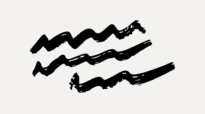A journey through tradition and modernity in Persian graphic design
Written by Arezu Ahmadi Associate RGD, A Pencil Design
Arezu Ahmadi Provisional RGD highlights the history of and trends in Persian graphic design.

Unique and diverse cultural practices make the world a fascinating place to explore visual communication. Persian culture and design roots offer a unique perspective on design that diverges from the predominantly western viewpoint that exists in the global design landscape.
Iran, with its deep-rooted cultural heritage spanning 3,000 years, poses a distinctive challenge for Persian designers. They grapple with an abundance of historical inspiration while striving to forge something innovative. This challenge arises from the need to preserve a history so rich that it serves as both a wellspring and a constraint to innovation. Notably, in 2022 amidst the complex political issues in Iran, graphic designers played a crucial role during the Woman, Life, Freedom revolution, creating impactful visuals that evolved into symbolic representations of resistance and unity.
Growing up in Iran surrounded by Persian rugs, I was immersed in historical art from a very early age. These rugs, tracing their origins to ancient times, have adorned the homes of royalty worldwide. They symbolize a journey through time, reflecting the continuous evolution of Persian artistry.

Iranian art has been manifested in various forms, including paintings, clays, seals, coins and ceramics. The artifacts from Tepe Sialk, dating back 4,000-6,000 years, showcase simple geometric forms representing animals and nature; a pioneer to the origin of calligraphy. The profound connection between calligraphy and painting is evident in a plethora of contemporary designs.
Cultural icons, such as Persepolis, Naqshe Rustam and Takht-e Jamshid, constructed by kings to preserve memories, stand as monumental symbols in Iranian history. Graphic artists draw inspiration from these ancient cultural monuments, creating logos that pay respect to Iran's rich past.
Religion, particularly Islam, has significantly influenced Iranian art and graphic design. Miniatures featuring characters have evolved over time, transitioning to intricate ornaments based on the words of the Quran. Calligraphy, a revered applied art of Islam, plays a central role in Iranian graphic design, seamlessly intertwining words and images.
The fusion of words and images in Iranian graphic design highlights the profound importance of text within the culture. In contrast to the Latin alphabet, which treats letters as individual units, Persian (Farsi) writing emphasizes the importance of the word. This linguistic distinction, coupled with the elegance of drawings, transcends language barriers, conveying meaning and emotion.
Iranian artists educated in the UK and the United States, such as Morteza Momayez, Farshid Mesghali and Ghobad Shiva, integrated western techniques while maintaining their cultural identity. The 1979 Islamic Revolution led to a period of stagnation, but the 1990s witnessed a rebirth as young designers sought an authentic Iranian design identity.
Persian cultural graphics draw on the designer's connection with the past, intertwining visual tradition with Iranian identity. This unique essence, resistant to borrowing from elsewhere, defines Persian graphic design.

In conclusion, Persian cultural graphic design is characterized by its noticeable modern and deconstructive nature. Distinction takes precedence, reflecting the innate resistance to adopting a purely modern identity in a society deeply rooted in tradition. The Iranian design journey navigates the delicate balance between preserving heritage and embracing innovation, offering the world a distinctive perspective on the evolving landscape of graphic design.
Arezu Ahmadi Provisional RGD is a freelance graphic designer at A.Pencil Design with a background in graphic design and UX. She previously worked with ASUS. Her expertise includes brand design, graphic design and web design, helping passionate entrepreneurs turn their ideas into successful businesses. Arezu excels in authentic storytelling and design, providing clients with visual identities that empower their growth. She's dedicated to continuous learning and enjoys sharing insights with the design community.

Arezu Ahmadi Associate RGD
A Pencil Design
Related Articles


Brennan Seedhouse Robinson Associate RGD


Nick Shinn RGD Emeritus












